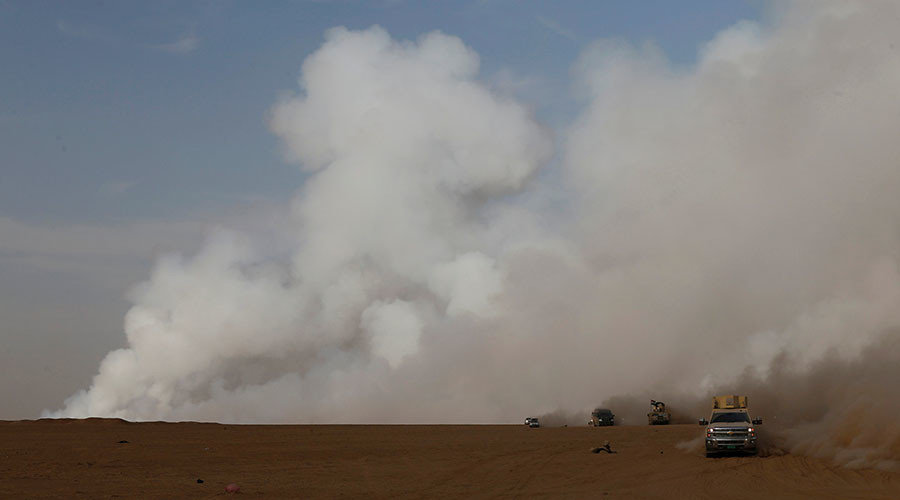
The Al-Mishraq sulfur plant and mine were set on fire last Thursday, Iraqi commander Qusay Hamid Kadhem told AFP. At least two civilians in nearby villages have reportedly been killed from sulfur dioxide exposure, and 1,000 others have been treated for breathing problems.
According to scientists, the sulfur dioxide emission is "significant" and alarming.
The large sulfur dioxide cloud has been spotted by The Ozone Monitoring Instrument (OMI) on NASA's Aura spacecraft and the Ozone Mapping Profiler Suite (OMPS) on Suomi NPP. It has been seen spreading cross northern and central Iraq.
The sulfur dioxide emission is comparable to what typically takes place during a large volcanic eruption.
The same sulfur field was on fire for one month in 2003, with scientists estimating that 21 kilotons of toxic sulfur dioxide were emitted daily during that time period.
"After nearly a month of burning, the 2003 fire had released roughly 600 kilotons of sulfur dioxide - so much that it was the largest non-volcanic release of sulfur dioxide we had ever observed with satellites," said Nikolay Krotkov, an atmospheric scientist at Goddard Space Flight Center.



Reader Comments
[Link]
this entire 20 years of nation baiting has one purpose: to turn the nations of the Middle East on each other in bitter generations long hatred that will prevent the other world fear of a return to a united Muslim world.
This is the reason for the infighting; to use the horrors of war on the population --hunger, despair, fear all stress factors that in turn collapse the immune system--exposure to massive dna damaging toxins that create diminished intelligence ---and decimate the landscape to prevent a return to clean water and crop growing.
This is an evil war. This is what all wars have been building up to. The return to sub humans easily controlled by an elite.
Did the Atlanteans control the ancient world. I say YES. Was plasma and sound involved? YES. WE may be using drone attacks but the Atlanteans used the energy of the crystal core of the Earth refocused into infrasound. Is this what CERN is trying to do?